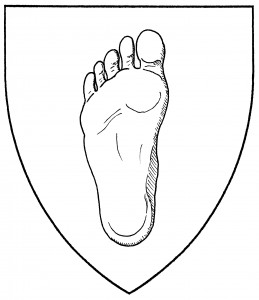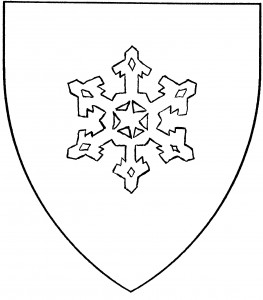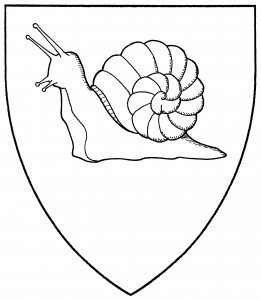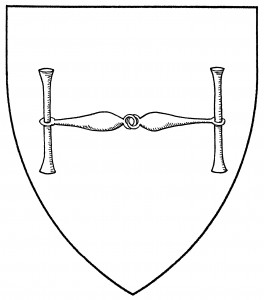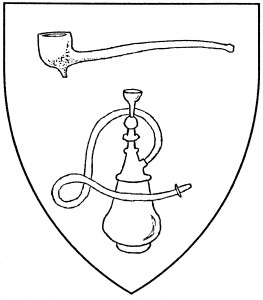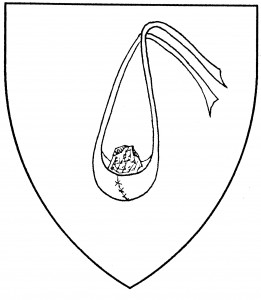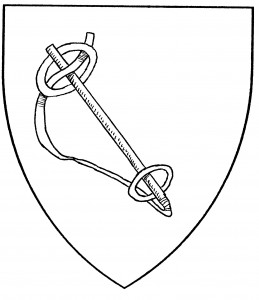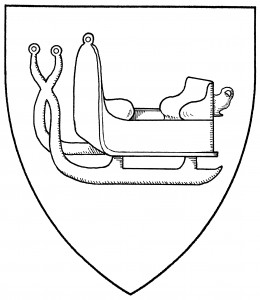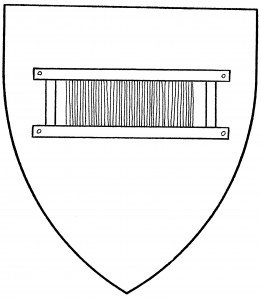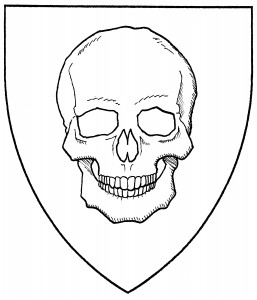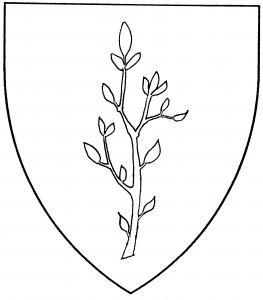
Slip, or branch, with leaves (Period)
A slip is a stem of a plant, with leaves, fruit, and flowers attached. The term is often used in blazons such as “a rose, slipped and leaved”, or “an apple slipped”; in such cases the slip is subordinate in importance to the flower or fruit. However, slips may be used in their own right, as in the arms of Goldast, c.1340 [Zurich 441].
In general, a slip is blazoned a “sprig” to indicate a long stem, with many leaves and several blossoms or fruits; in that case, the flowers are subordinate to the slip. There is also the “branch”, denoting a woodier slip (typically from a tree) with fewer leaves, or none; the bare wood is clearly visible. Branches are found in the arms of Schönbühl, c.1340 [Zurich 294].
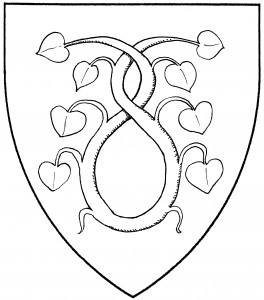
Linden branch twined on itself (Period)
Slips, sprigs and branches are palewise and couped by default. A specific depiction of slips and branches in period has them “twined on themselves”, or twisted about in a stylized, symmetric manner. This depiction is found in the arms of von Seckendorff or Säggendorff, c.1450 [Ingeram152]; the number of twists seems to have been artistic license.
For related charges, see broom, bush, leaf, tree, vine.
Lavendar of Lorne bears: Per bend sinister argent and azure, six sprigs of lavender in annulo counterchanged.
Melucine de Ronceverte bears: Vert, on a pale argent a greenbriar slip vert.
Alice of Kent bears: Vert, a sprig of elder bendwise sinister argent.
Enid de Bohun bears: Per bend sinister Or and vert, a hawthorne sprig gules.
Yorath of Delvingrim bears: Gules, in pale three oak branches fesswise leaved and fructed Or.
Alessandra de Messina bears: Per chevron gules and argent, three linden branches twined on themselves counterchanged.

